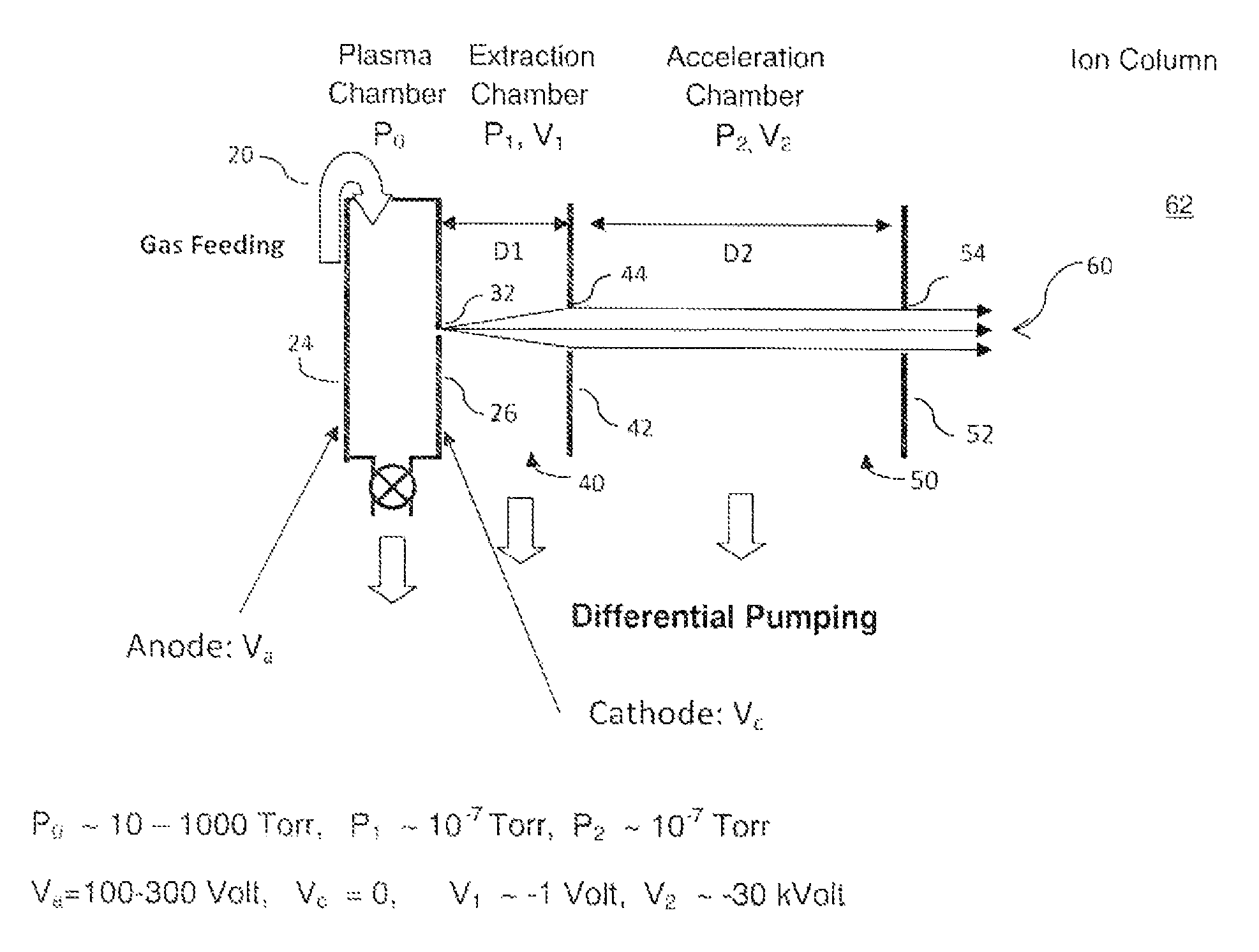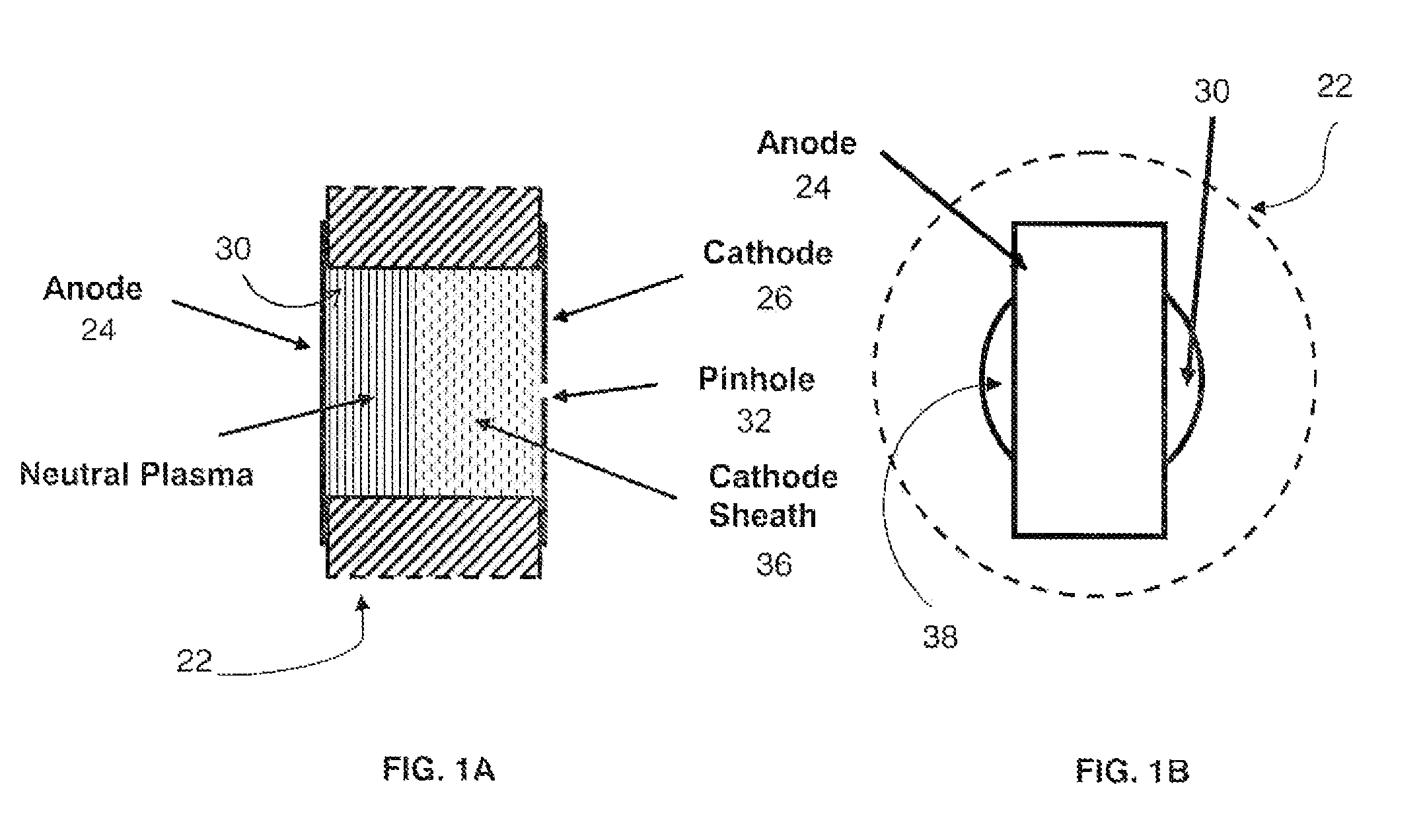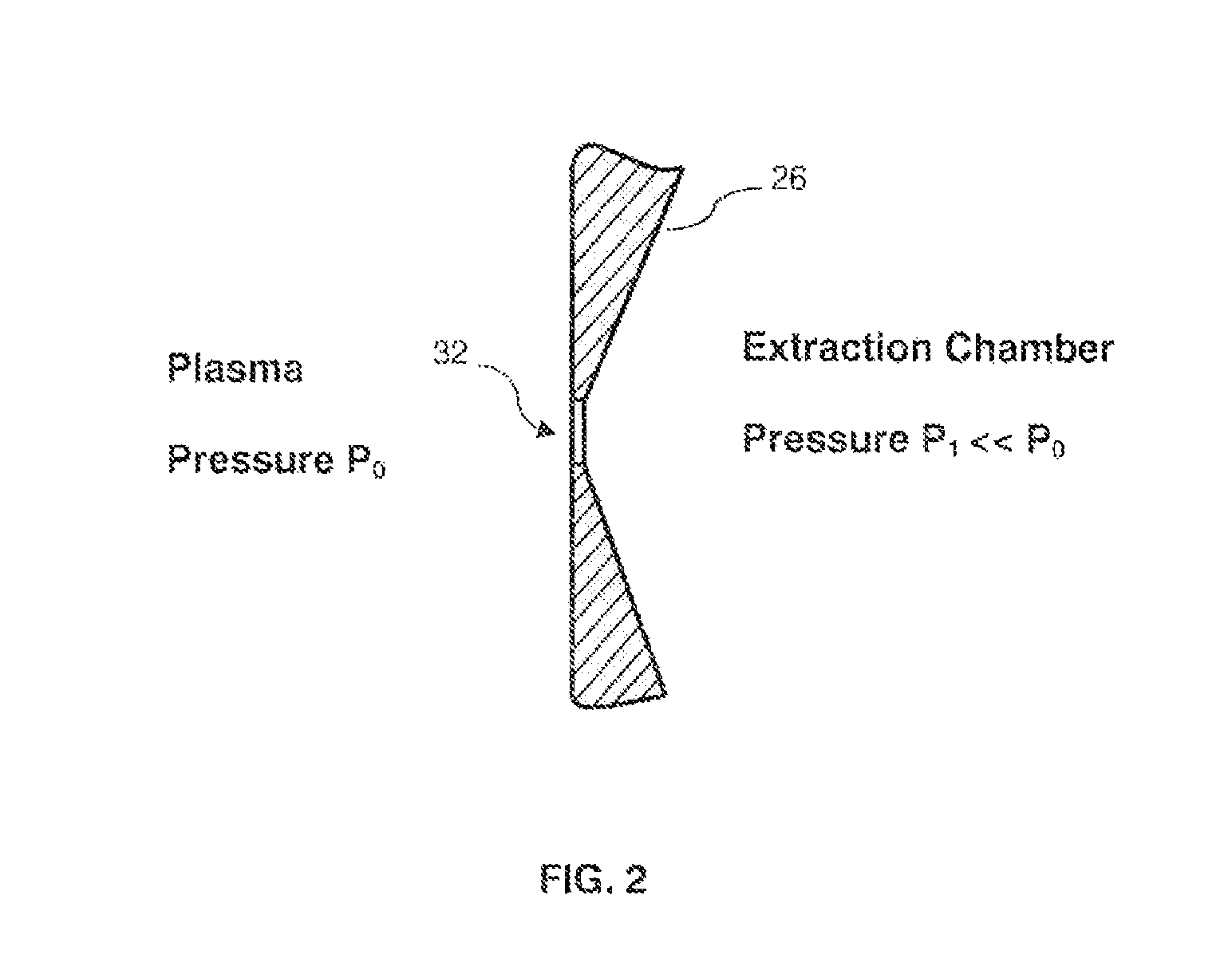Microplasma ion source for focused ion beam applications
a microplasma ion source and focused ion beam technology, applied in the field of focused ion beam (fib) systems and methods, can solve the problems of reducing the dimensions of all of the ic components, affecting the use of ga+/sup> ions in ce applications, and increasing the complexity of ic technology
- Summary
- Abstract
- Description
- Claims
- Application Information
AI Technical Summary
Benefits of technology
Problems solved by technology
Method used
Image
Examples
Embodiment Construction
[0016]In order to obtain a cold (normal glow discharge ion temperature in the range of 0.5-1 eV), bright (current density in the range of 0.1-1 A / cm2 or higher) flux of positive ions of a suitable gas, for example an inert noble gas, such as xenon, for use in focused ion beam (FIB) applications, the invention uses a high pressure normal glow discharge microplasma source, preferably having a parallel plate geometry. However, unlike macroscopic plasma sources having sizes of the order of 1 cm and which cannot sustain normal glow discharges at high pressures and high current densities, the microplasma sources used by the invention have chamber dimensions of about 1-1000 μm, and can sustain normal glow discharge over a wide range of gas pressures and electrical currents, and more particularly at high gas pressures and currents in the desired ranges. Microplasma sources which may be used to practice the invention comprise devices having various different architectures, geometries, and el...
PUM
| Property | Measurement | Unit |
|---|---|---|
| pressure | aaaaa | aaaaa |
| current density | aaaaa | aaaaa |
| pressure | aaaaa | aaaaa |
Abstract
Description
Claims
Application Information
 Login to View More
Login to View More - R&D
- Intellectual Property
- Life Sciences
- Materials
- Tech Scout
- Unparalleled Data Quality
- Higher Quality Content
- 60% Fewer Hallucinations
Browse by: Latest US Patents, China's latest patents, Technical Efficacy Thesaurus, Application Domain, Technology Topic, Popular Technical Reports.
© 2025 PatSnap. All rights reserved.Legal|Privacy policy|Modern Slavery Act Transparency Statement|Sitemap|About US| Contact US: help@patsnap.com



